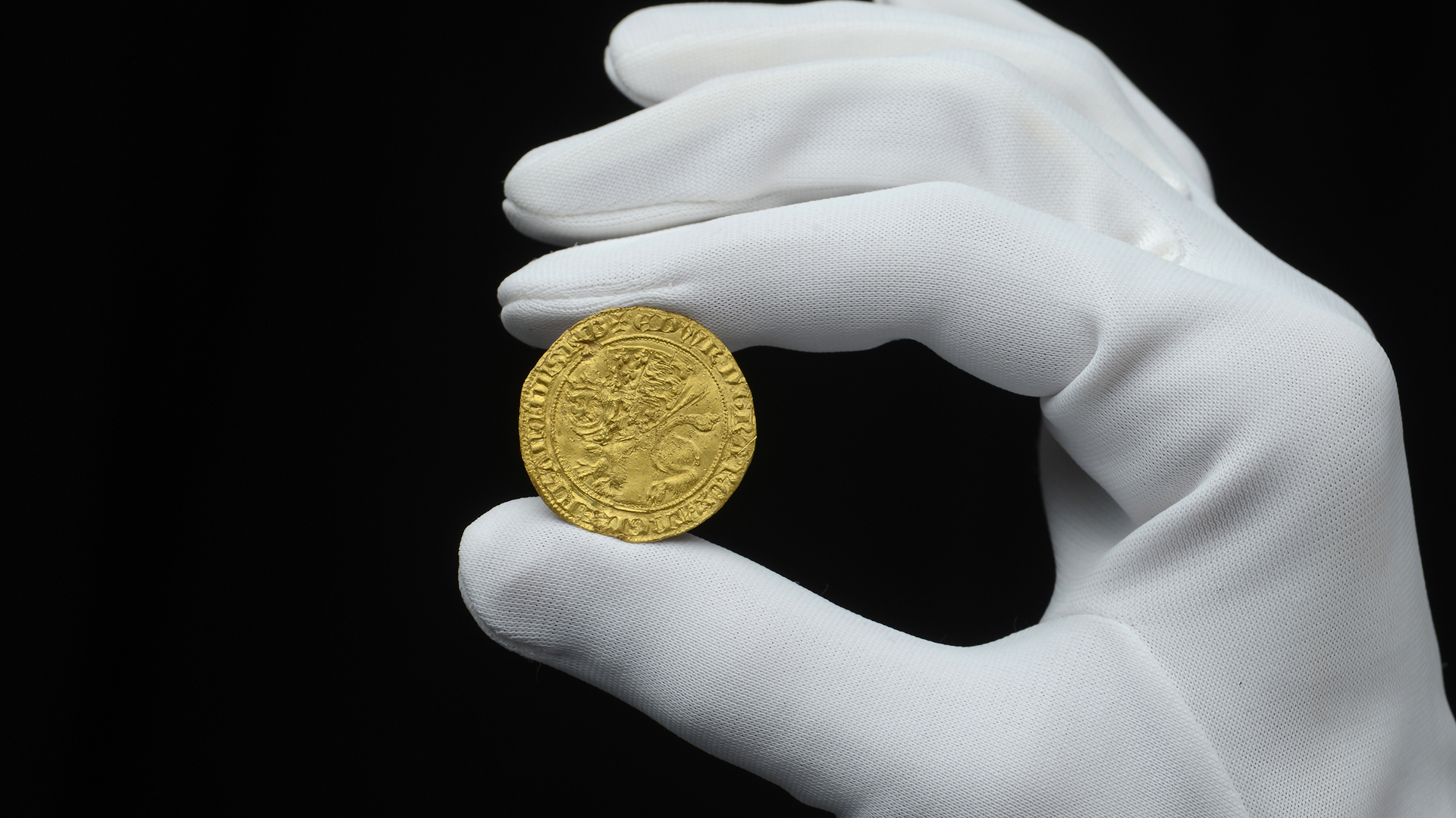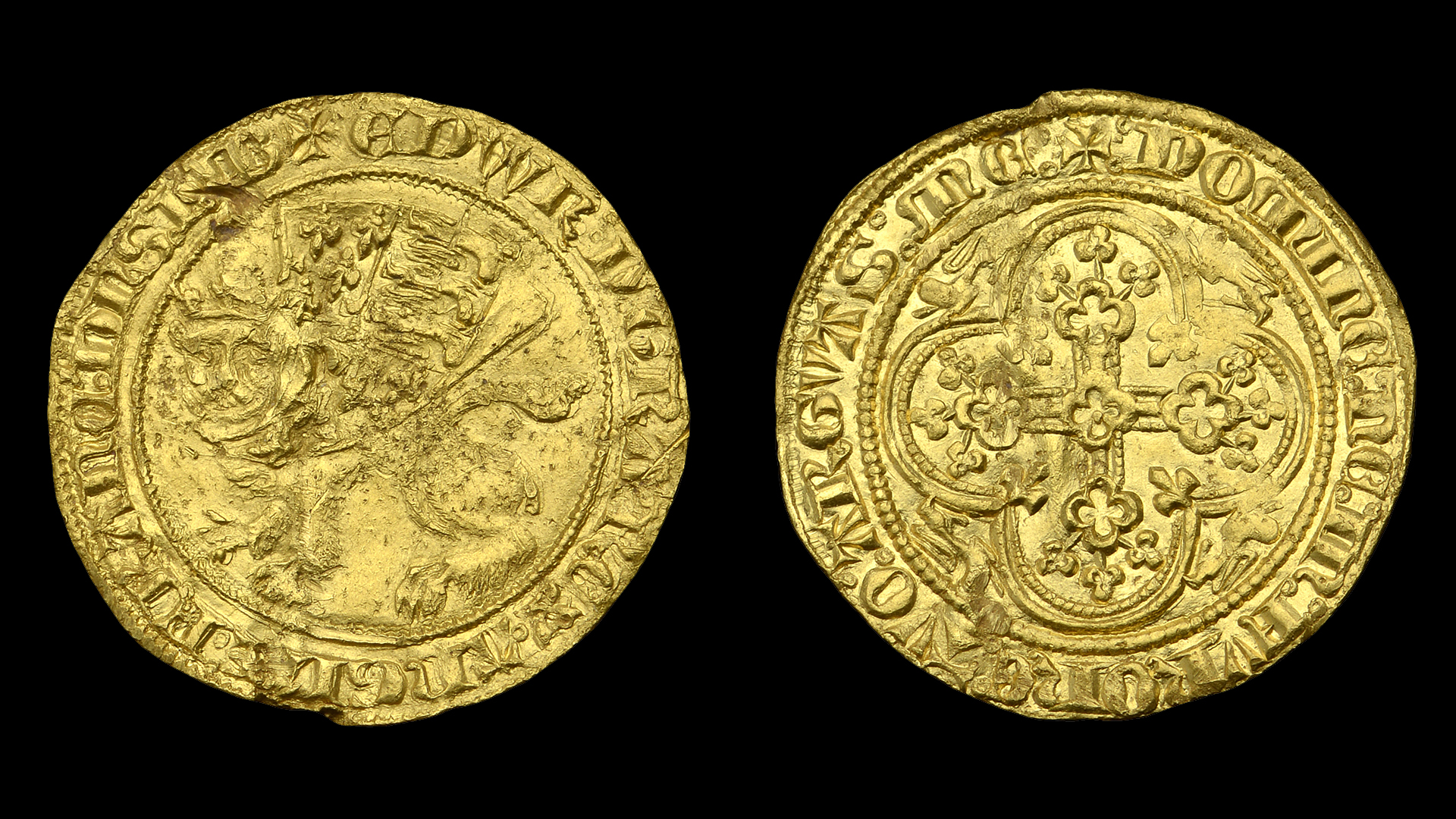Rare 14th-century gold 'leopard' coin could sell for 140,000 British pounds
These 23-karat coins were minted only briefly, for seven months in 1344.

An exceptionally rare gold coin stamped with a leopard sitting upright and wrapped in a banner was unearthed by a metal detectorist in England and is heading to the auction block.
The coin was minted in the Tower of London from 23-karat gold during the 14th century. It looks nearly brand-new and is one of just a handful of surviving leopard coins from a failed currency experiment by King Edward III.
The coin was discovered in 2019 in North Norfolk, and only four other such coins are known: Two belong to the British Museum in London, one is housed in the Ashmolean Museum in Oxford and one is in a private collection, representatives of auction house Dix Noonan Webb (DNW) wrote in a catalog description. The Norfolk leopard coin measures about 1 inch (2.5 centimeters) in diameter, weighs 0.12 ounces (3.48 grams) and is expected to fetch up to 140,000 British pounds ($187,000) when it goes up for auction on March 8, DNW representatives said in a statement.
Related: The most amazing coin treasures uncovered in 2021
France and Italy began producing gold coins in the 13th century, and from January to July 1344, England's Edward III minted 32,000 British pounds' worth of gold into three types of leopard coins — leopards, double leopards and helms — in an attempt to introduce gold money into English currency. (At the time, all English coins were silver.)
A crowned leopard head was first used by King Edward I in 1300 "as the king's mark of authentication on silver and gold," and leopard designs appeared during the 14th century on flags and shields belonging to British royalty and their supporters, said Nigel Mills, a DNW antiquities consultant specializing in coins and other ancient artifacts discovered by metal detectorists.
The three types of leopard coins had different designs. The face of a double leopard showed a seated king, a leopard coin had a stylized leopard on the front and a helm was decorated with a knight's helmet, Mills told Live Science in an email.
Get the world’s most fascinating discoveries delivered straight to your inbox.
Edward III declared that a leopard would be worth 3 shillings, a double leopard would be equal to 6 shillings and a helm would be worth 18 pence, and he minted according to DNW. But the coins were expensive to produce, did not easily divide into other denominations and were thought to be overvalued relative to silver, leading the government to withdraw them from circulation and demonetize them in August 1344.
The Norfolk leopard coin might command a six-figure price now, but how much could a person buy with one golden leopard in 1344? At the time, a 3-shilling coin was the equivalent of 36 silver pennies, which had the purchasing power of about 2,000 British pounds ($2,670) in today's money, Mills said.
"It would have bought you a single sheep together with a gallon of wine, with a few pennies change," Mills said.
Originally published on Live Science.

Mindy Weisberger is a science journalist and author of "Rise of the Zombie Bugs: The Surprising Science of Parasitic Mind-Control" (Hopkins Press). She formerly edited for Scholastic and was a channel editor and senior writer for Live Science. She has reported on general science, covering climate change, paleontology, biology and space. Mindy studied film at Columbia University; prior to LS, she produced, wrote and directed media for the American Museum of Natural History in NYC. Her videos about dinosaurs, astrophysics, biodiversity and evolution appear in museums and science centers worldwide, earning awards such as the CINE Golden Eagle and the Communicator Award of Excellence. Her writing has also appeared in Scientific American, The Washington Post, How It Works Magazine and CNN.



